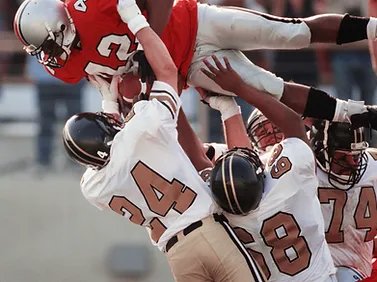Acromioclavicular (AC)
Joint Dysfunction
Injury Guide

Acromioclavicular (AC) joint dysfunction is a common injury among athletes, affecting performance and quality of life. Understanding the symptoms, causes, and rehabilitation strategies is crucial for athletes. At [Your Physical Therapy Clinic], we specialize in providing tailored care and comprehensive rehabilitation programs to help athletes recover and regain optimal function, empowering them on their recovery journey and enhancing their athletic abilities.
Symptoms:
AC joint dysfunction is characterized by pain and discomfort in the shoulder region, specifically where the clavicle (collarbone) meets the acromion (shoulder blade). Athletes experiencing AC joint dysfunction often report persistent or sharp pain around the AC joint area during activities that involve shoulder movement, such as throwing, reaching, or lifting. They may also experience visible swelling and tenderness over the AC joint, limited range of motion, and a feeling of weakness or instability in the shoulder.
Anatomy:
In the model above, you can find the AC joint directly above the shoulder joint.
The Acromioclavicular joint is formed by the articulation of the acromion, a bony process of the scapula (shoulder blade), and the lateral end of the clavicle (collarbone). This joint plays a crucial role in facilitating the movement and stability of the shoulder complex. It is supported by ligaments, tendons, and surrounding soft tissues, which collectively provide stability and ensure proper functioning of the joint.
In cases of AC joint dysfunction, the ligaments that hold the joint together may become stretched, torn, or disrupted, leading to instability and pain. The most commonly affected ligaments are the acromioclavicular ligament and the coracoclavicular ligament.
The acromioclavicular ligament spans across the top of the joint and helps to stabilize it. It can be strained or torn during traumatic events such as falls or direct blows to the shoulder. The severity of the injury can range from a mild sprain to a complete tear.
The coracoclavicular ligament, consisting of the conoid and trapezoid ligaments, provides additional stability to the AC joint. When these ligaments are injured, it can result in significant joint dysfunction and instability.
The implications of AC joint dysfunction can vary depending on the severity of the injury. In mild cases, athletes may experience localized pain, swelling, and limited range of motion. However, in more severe cases, the AC joint may become visibly deformed or dislocated, causing intense pain and functional impairment. Athletes may find it challenging to perform activities that require overhead movements, such as throwing, serving, or weightlifting.
Causes:
This condition can occur due to various reasons, often resulting from acute trauma or overuse injuries. Athletes engaged in high-impact sports or repetitive overhead motions are particularly susceptible to AC joint dysfunction. Direct trauma, such as a fall onto an outstretched arm or a direct blow to the shoulder, can disrupt the ligaments and surrounding structures supporting the AC joint. Repetitive stress from activities like throwing, serving, or weightlifting can strain the AC joint over time, leading to dysfunction. Additionally, age-related wear and tear can weaken the AC joint, making it more prone to dysfunction and injury.
At Latitude Physiotherapy, we utilize a multidisciplinary approach to help athletes recover from AC joint dysfunction. Our comprehensive rehabilitation strategies encompass pain management, range of motion exercises, strengthening exercises, proprioceptive training, and functional rehabilitation.
Pain management is a key component of the rehab process. Cryotherapy, manual therapy, soft tissue mobilization, and other modalities can help promote healing, reduce inflammation, and provide pain relief.
Range of motion exercises play a vital role in restoring the shoulder’s mobility. A physical therapist can guide athletes through specific exercises and stretches to improve flexibility and reduce stiffness. Gradually increasing the range of motion helps athletes regain full function.
Strengthening exercises are designed to target the muscles around the AC joint. By providing stability and support, these exercises enhance functional strength and help prevent future injuries. A physical therapist can create individualized exercise programs that address muscular imbalances and promote optimal shoulder function.
Proprioceptive training is essential for athletes to regain control and coordination of their shoulder movements. Our clinic incorporates exercises that focus on enhancing body awareness and joint stability, which are crucial for athletes to return to their sport with confidence.
As athletes progress in their recovery journey, we introduce functional rehabilitation exercises and activities that simulate their actual sports movements. This stage helps athletes regain confidence, enhance performance, and reduce the risk of re-injury. We believe in equipping athletes with the skills they need to excel in their respective sports.
AC joint dysfunction can significantly impact an athlete’s performance and overall quality of life. Specialized rehabilitation programs addressing pain management, range of motion, strengthening, proprioceptive training, functional rehabilitation, and patient education play a key role in helping athletes regain optimal function and reclaim their athletic abilities. A multimodal approach like this one is sure to guide you on the road to recovery and ensure a successful return to your sport.
Let’s
Work
Together
Ready to get started? Click here. General questions? Read our FAQ page. Have a specific question? Leave us a message!
